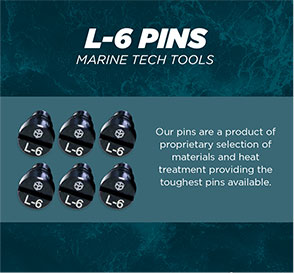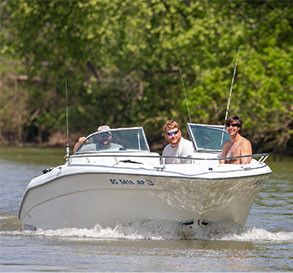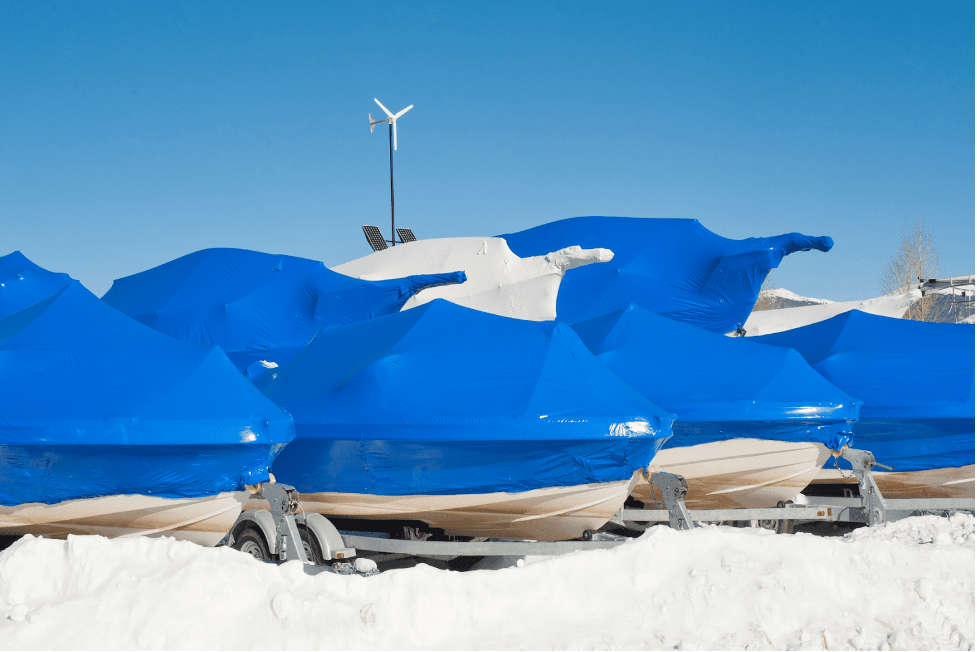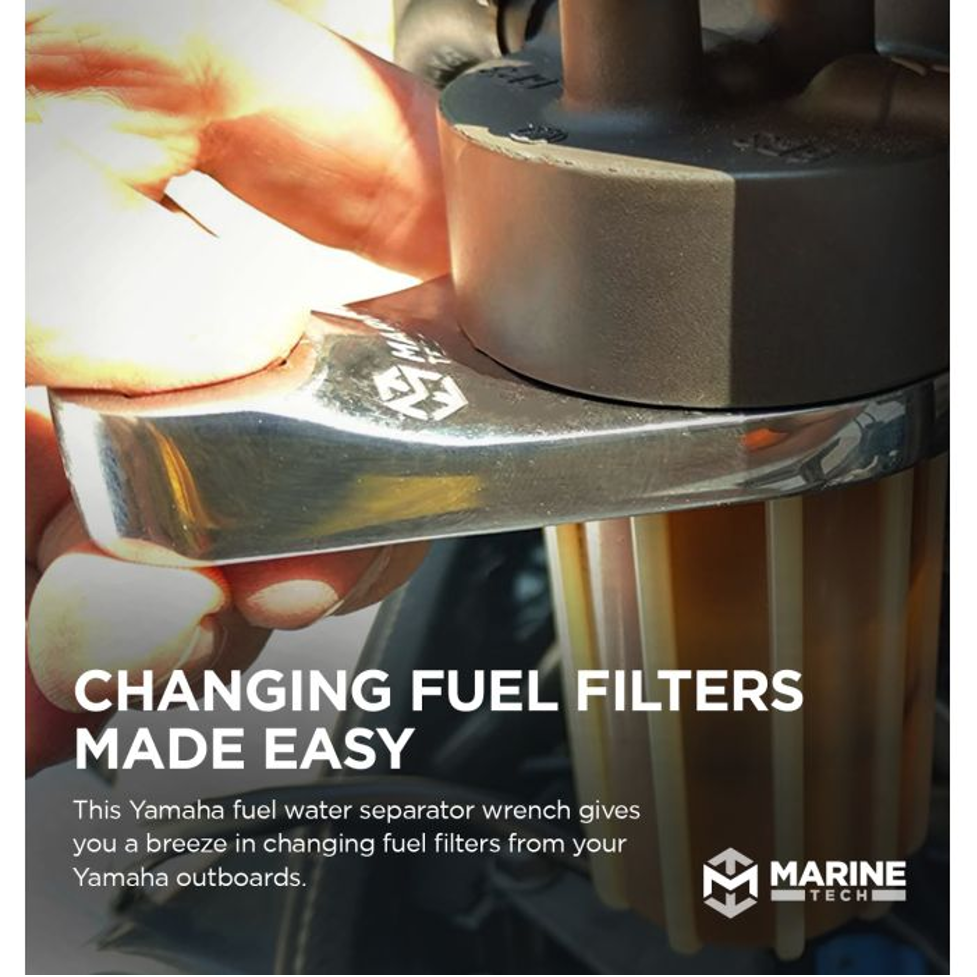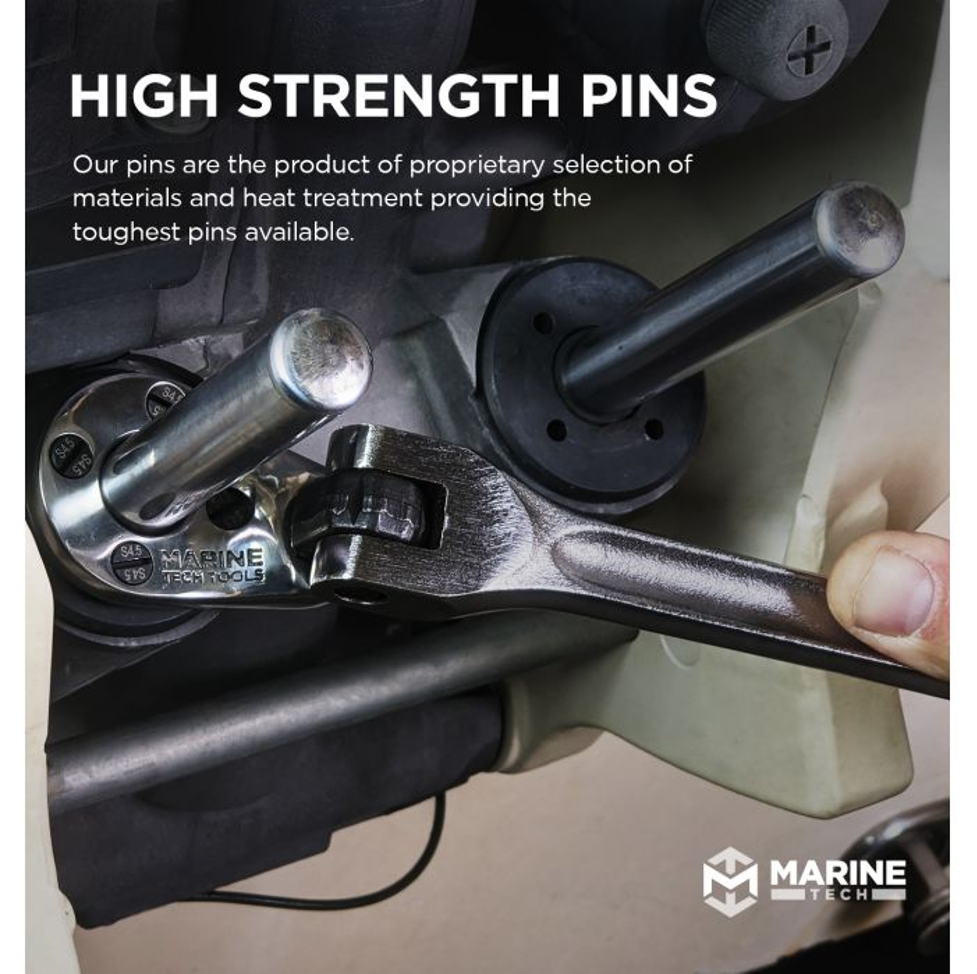Changing the water pump on your outboard motor is an important part of your boat’s regular maintenance. You should change your water pump every 200 hours, roughly once every two years or every other 100-hour service.
Replacing the water pump is fairly simple and inexpensive, so why not learn to do it yourself and get back on the water even faster? We’ll show you how to tear down and replace your Yamaha outboard water pump, so you don’t have to pay extra for someone else to do it.
You can also watch our training video for the full process.
Step 1: Remove the Gearcase

The first thing you’ll need to do is pull the gearcase off the motor. Start by removing the trim tab and the bolts underneath. (It’s not a bad idea to remove the propellor first, so you don’t accidentally cut yourself on it.)
Gently wiggle the gearcase loose from the motor. One word of caution here: on Yamaha outboards, the speedometer pickup is a tiny plastic piece smaller than a pinky finger. This is very easy to snap if you aren’t careful, so be sure to take your time working the gearcase loose.
If it’s held on by extra gunk and corrosion, you may need to pry it loose. As you do, keep one hand under the gearcase so it doesn’t slip. Once it starts moving, you should be able to slowly wiggle it the rest of the way off, being very careful not to drop it once it comes free.
Step 2: Disassemble Water Pump Housing

Once you have your gearcase removed, it’s time to remove the water pump housing. If it’s been a very long time since the water pump has been taken off (or if it’s never been taken off), the bolts will likely put up a fight, but it still shouldn’t take too much torque to remove them.
Once the bolts are out, carefully wiggle the housing until it comes off. If you need to pry it up, be very careful not to damage any of the surrounding surfaces. There needs to be a clean, flat seal all the way around when you put everything back together.
On Yamaha outboards, the next thing to remove is the drive shaft collar. To do this, we’ve developed an insert that fits on our upper bearing carrier puller for quick and easy removal of a Yamaha drive shaft collar. Slide the adapter insert between the bottom of the drive shaft collar and the nylon spacer underneath, then fit the puller on, lock it in place, and pull.
Once you’ve removed the drive shaft collar and spacer, remove the wave washer assembly and set it aside. This has three pieces — two flat washers and one wave washer — and is not included in the repair kit, so they will need to go right back in place when you reassemble everything in a few minutes.
Next, remove the impeller, prying carefully around it as needed. Then you’ll pry off the woodruff key, but if it’s thoroughly seized into the draft shaft — as they often are — you may have to use a stronger tool like our impact tool air hammer attachment. Sheer off a little piece of the key to get a flat edge, drill a tiny hole using a very sharp drill bit, and then hook the impact tool into the hole and use the air hammer to take the key right out.
Finally, pull off the wear plate and gasket. While you have everything pulled apart, be sure to check the damper seal and gasket and the upper seals to see if you need to replace them, too.
Step 3: Assemble New Water Pump Kit

Now it’s time to assemble your water pump repair kit. Start by dabbing a bit of grease around the inside of the water pump housing to hold everything in place. Place the smaller o ring into the groove, followed by the cartridge insert (making sure it’s perfectly aligned) and then the larger o ring. Wipe off any excess grease and apply it in a thin film on the inside of the cartridge insert.
Now that your housing is put back together, grease up the mounting bolts, and you’re ready to install everything back into the gear case.
Step 4: Reinstall Housing onto Gearcase

Replace each piece in the opposite order from how you took them off, making sure to put a heavy coat of grease on the sides (but not the top) of the drive shaft and shift shaft splines, and a thin film on the speedometer pickup.
As you press in the woodruff key, make sure it’s perfectly aligned and that it sets all the way in. Same thing for the impeller — it needs to sit completely flat on the wear plate.
When you’re ready to set the drive shaft collar down on top of the spacer, you need to do three things at once:
- Pull up on the drive shaft.
- Set the drive shaft collar down on the spacer, tapping it down gently with the insert that comes with the upper bearing carrier puller.
- Spin the drive shaft.
Once the drive shaft collar is on, double-check that it’s set nice and flat.
Then, very carefully slide the housing on and set it on top of the impeller. Watch the larger o ring on the bottom of the housing here — it can very easily slip off. Use a rag or paper towel to get a good grip on the drive shaft and rotate it clockwise while you push down on the housing. This will set the impeller blades in such a way that it prevents them from spinning backward and causing damage when the motor is running.
Keep one hand on the housing, holding it firmly down, while you insert the water pump mounting bolts and tighten them completely. Once the housing is firmly in place and you’re satisfied that there are no loose o rings, it’s time to hang the gear case back on the motor.
Step 5: Hang Gearcase

Before you hang the gear case, you’ll want to have a few things ready:
- Set the controls on the boat and on the gear case to neutral.
- Grab a dry cloth or paper towel you can wrap around the shaft, in case you need to twist the shaft to align it correctly.
- Have a flashlight within reach.
Lift the gearcase and visually align the drive shaft, careful not to let the full weight hang on the drive shaft. Use the flashlight and feel with your hands to make sure everything is aligned, and gently work the gear case into place. (Watch out for that plastic speedometer pickup again!)
Maintain your hold under the gear case while you thread the mounting bolts partially in. Then check once more that your dowel pins are aligned and tap the gear case in by hand a bit more. Drive the bolts all the way in to close any remaining gaps, and you’re done!






